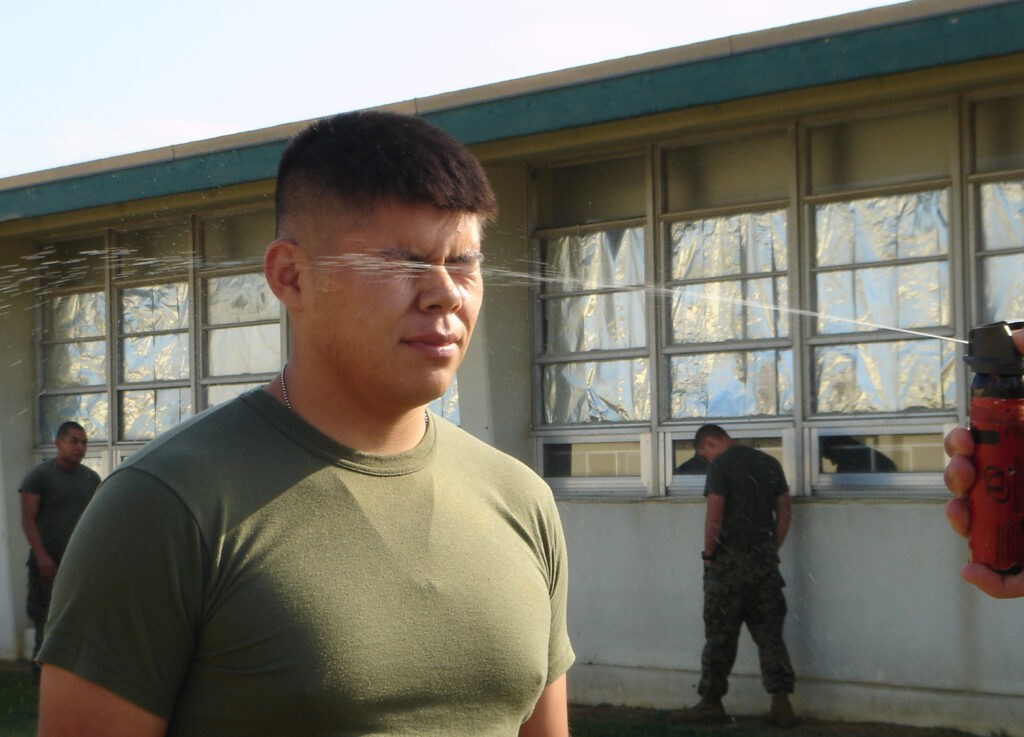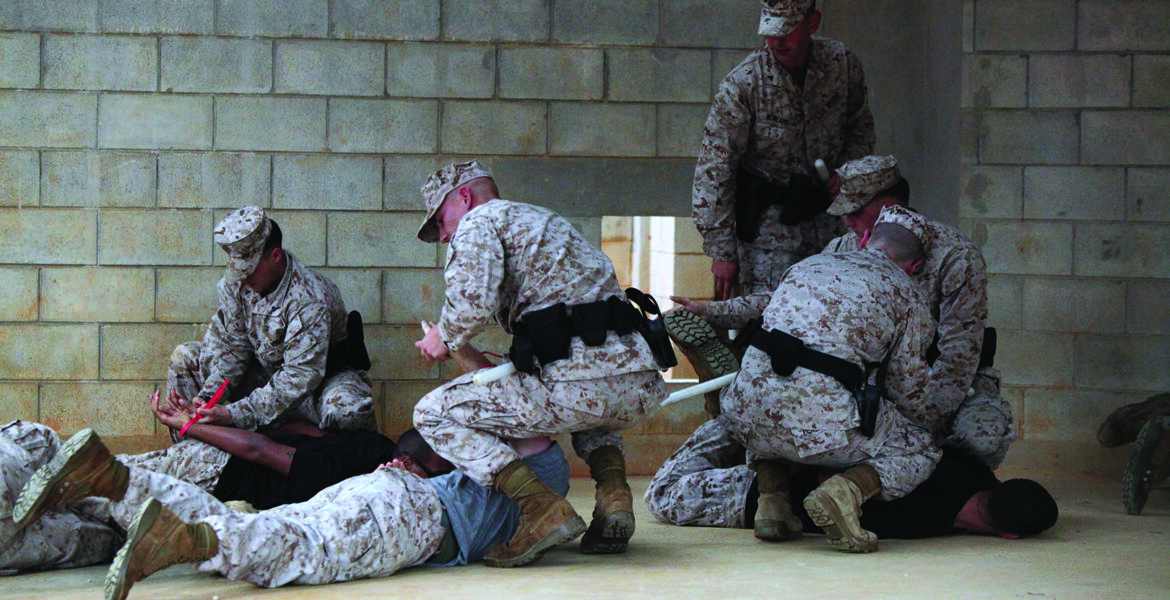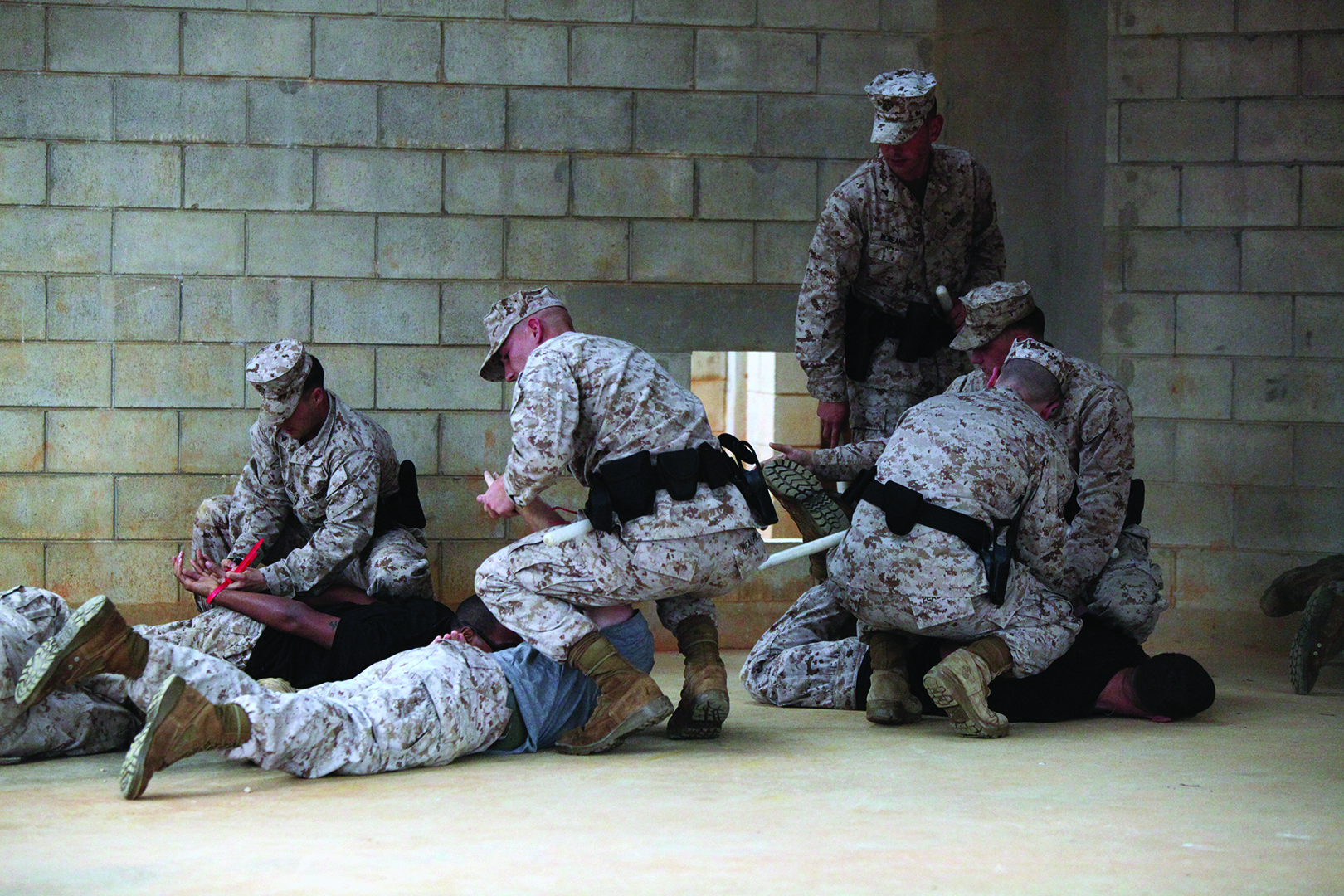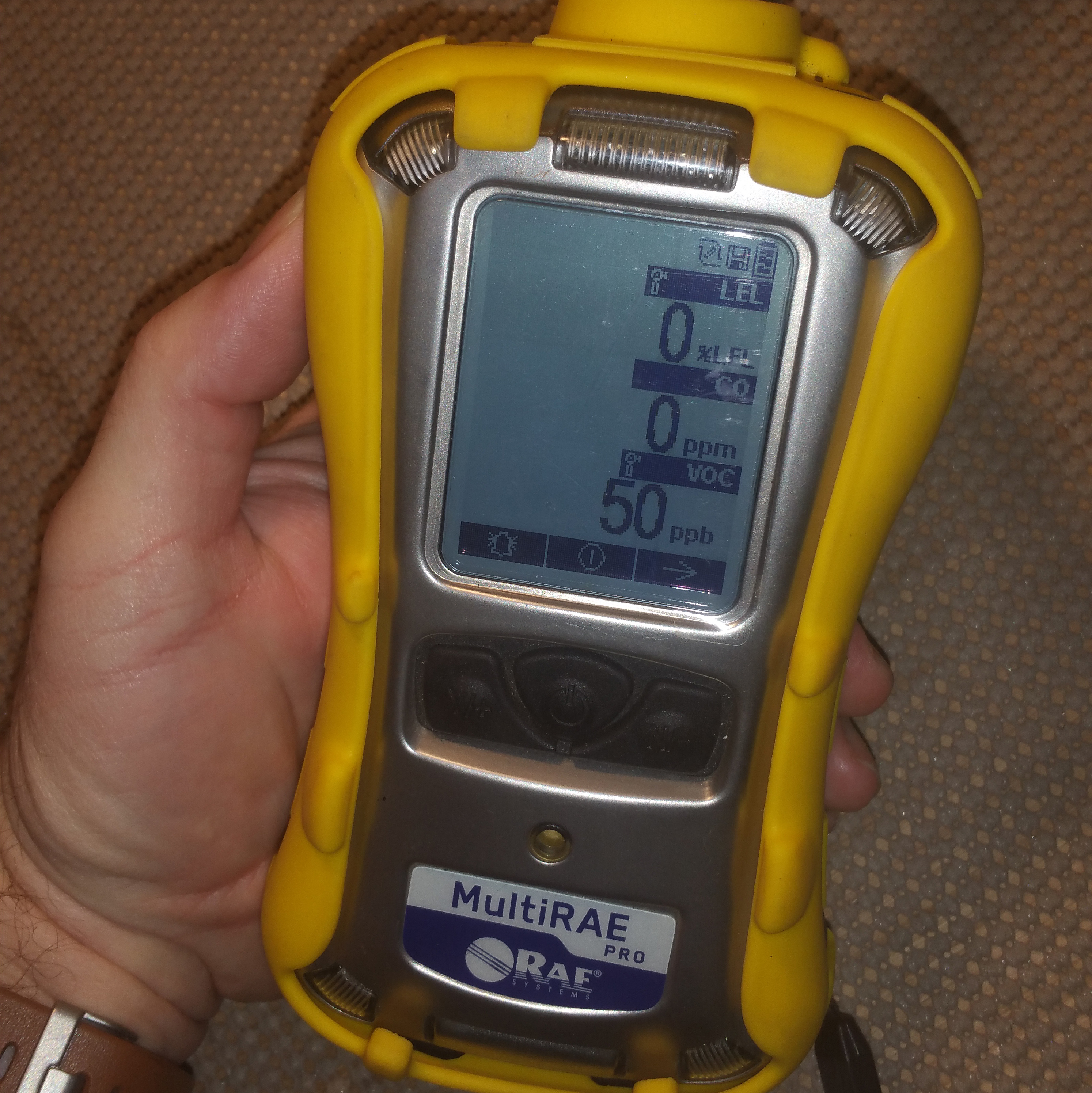Some may find it shocking or appalling, but having to use force is sometimes necessary and acceptable in facilities holding inmates. It isn’t abuse, torture, or a violation of rights. That is, it isn’t as long as policy and procedures are strictly followed. While the policy examples provided here are only applicable to Navy/Marine Corps Corrections, the concepts presented do exist in most, if not all, manuals and SOPs for Corrections facilities in the US.
“Staff personnel must avoid use of force where the assigned responsibilities can be effectively discharged without its use. If security cannot be accomplished without the use of force, personnel will use the minimum amount of force necessary to control the situation.” (SECNAV 1640.1 Corrections Manual)
The American Correctional Association publishes standards for county jails, and meeting those standards leads to accreditation for the facility under the ACA; similar standards and accreditation programs exist by other nationally recognized bodies as well. One of ACA’s mandatory requirements is for written policy and procedures, and staff training on Restrictions on Use of Force:
1-CORE-2B-01 (Mandatory) (Ref. 4-ALDF-2B-01)
The use of physical force is restricted to instances of justifiable self-defense, protection of others, protection of property, and prevention of escapes, and then only as a last resort and in accordance with appropriate statutory authority. In no event is physical force used as punishment.
Facility records and logs, incident reports, and training records are used as indicators of compliance.
Corrections Officers must consider many factors before deciding to use force. Some include the safety of other staff and inmates, prevention of loss of life or injury to other staff or inmates, prisoner welfare, and SOP for priorities of force.
Priority of Force usually starts with giving the inmate an order. An order in this case is almost always verbal. When it is given, the Corrections Officer’s tone, volume, body language, and other cues must clearly articulate that they aren’t asking or suggesting—the order is a lawful, authoritative demand. If that order is not followed, a show of force may become necessary. Often this show of force is to call for additional staff, but that may not always be possible or timely. Show of force can also include unholstering and making ready a less lethal weapon like a taser, baton, or OC spray. This is where situational awareness, training, and knowledge of SOP become very important. First, the officer must be trained and certified in the use of the less lethal tool they are preparing to make use of. They must also understand that the simple act of making that device/tool ready and presenting it as a “threat” to reinforce the given order may escalate the situation. Most importantly, the CO must remember that SHOW of force does not always lead to or require USE of force.
“Use of physical force is restricted to instances of justifiable self-defense, protection of others, protection of property, prevention of escapes, and to maintain or regain control, then only as a last resort…when use of force is necessary, it will be exercised according to priorities of force and limited to the minimum degree necessary under the particular circumstances.” (SECNAV 1640.1 Corrections Manual)
Use of physical force doesn’t have to and may not necessarily involve the use of less lethal tools. Soft and Hard hand techniques are also use of force methods for self-defense, protection, and regaining control. The situation must dictate which hand technique is used, based on the likelihood of it being effective. That’s because hand techniques aren’t without risk. Soft hand techniques can greatly increase the possibility of injury to the officer; Hard hand techniques can increase the possibility of injury to the inmate and the officer. This is one reason that less lethal tools, most notably tasers and OC spray, are frequently used and deemed necessary in the corrections environment—when deployed appropriately, they are nearly always effective and limit the likelihood of injury to both the officer and inmate. Yes, getting tased causes pain, but rarely results in serious injury; hand techniques, on the other hand, often result in sprains, bruising, and even fractures. Most taser devices also have a capability known as “drive stun” or “dry taser” that involves holding the cartridge contacts directly against the body rather than deploying the electrodes. Drive stun causes localized pain without incapacitating and is usually considered a lesser use of force than firing/deploying a taser weapon.
Less lethal control should only be performed by officers that are trained and certified to use the tool. The ACA has another mandatory standard regarding this:
Weapons Training 1-CORE-7B-06 (Mandatory) (Ref. 4-ALDF-7B-15)
All personnel authorized to use firearms and less-lethal weapons must demonstrate competency in their use at least annually. Training includes decontamination procedures for individuals exposed to chemical agents.
ACA states that this protocol should be reflected in written policy and procedure, job descriptions, training curriculum, and training record forms and formats. Indicators of compliance include personnel records and training records.

Most agencies will not allow an officer to carry a less lethal tool that the officer isn’t certified to use. In the field and patrol environment, many departmental policies require that an individual be assessed by EMS or other medical providers after the use of a less lethal tool, to ensure there are no complications or injuries resulting from that use. The same should hold true in the corrections setting, with in-house medical staff performing an assessment of the inmate.
Finally, incident reporting should always be required where priority/use of force occurs. Some agencies may have separate reporting requirements, depending on what type of physical force was required, but all should have an incident reporting system that allows corrections officers to document the situation and what physical force methods were utilized. Those reports should be reviewed by supervisors and administrative staff, and any deviations from policy documented, reviewed with the officer, and retraining or disciplinary action taken as appropriate. Most modern inmate facilities have cameras throughout, and supervisors and administration officials should review video footage for comparison to the incident/use of force report filed to ensure use of force events have been properly and accurately documented. When reviewing reports and videos, two things to look for are:
- a threat or valid reason for use of force, including a threat to the safety of other staff and inmates, possible of loss of life or injury to other staff or inmates, threat to prisoner welfare, and/or noncompliance that affects or threatens to impact order and discipline within the facility.
- Progression/escalation through the priorities of force. This progression may at times happen very quickly, particularly when there is a clear and present danger to staff and other inmates. Each situation can be dramatically different. However, the reports and applicable video should reveal any necessity for rapidly moving through the priorities of force. Minimally, the review should consider if there was a clear and present danger or threat, if there was an order given, and if the level of force used was the minimum necessary to regain control, restore order, and protect lives.
Every standard and every training program for both correctional facilities and law enforcement agencies covers use of force to some degree. Even non-accredited facilities/agencies typically have policies and programs governing use of force, priority of force, and de-escalation. Having these policies in place, training officers to those policies, and enforcing compliance within the organization protects the facility/agency, the officers, and the public. This cannot be “check in the box” policy writing or training, as this is a critical area that can have a huge impact on how an encounter with an inmate, suspect, or the general public ends. This goes far beyond minimizing legal exposure or a potential lawsuit—it can literally be life or death.











